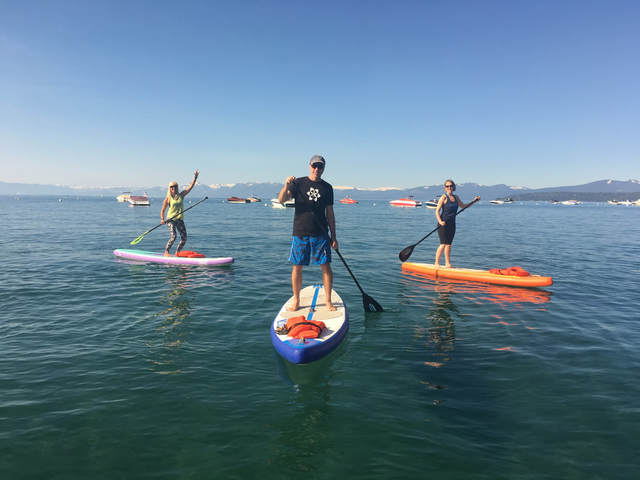|
Have you jumped in the lake today? If not, I highly recommend it. There is a reason that locals refer to Lake Tahoe as the ‘Blue Pill.’ Legend has it, a dip in the lake will cure whatever ails you- like a magic panacea for the mind, body and soul. It really does feel amazing, though- so cleansing and refreshing and invigorating! It is nearly impossible to go swimming in the lake and not come out with a big smile on your face.
I think we all instinctively know that being around (or in) water is good for us. But, what is it about water that makes us feel so good? I did some research on this topic and here are some things I learned: 1. Views of blue water boost well being. Researchers have studied the impact of living near various bodies of water. They coined the term ‘blue space’ to describe the time people spend gazing at bodies of water. Studies determined that increased views of blue space are “significantly associated with lower levels of psychological distress.” Other benefits of experiencing more blue space include improved mood, increased vitality and healthier sleep patterns. Blue spaces were even found to be more effective than green spaces (forests, rolling hills etc.) when it comes to overall stress reduction. Simply taking in views of Lake Tahoe, with its blue skies and even bluer water, is going to have a positive impact on your health. 2. Water is a powerful source of negative ions. Negative ions are oxygen molecules with an extra electron attached to them. They are most prevalent in fresh air and around natural water sources. High levels of negative ions in the atmosphere have been shown to increase our ability to absorb oxygen and boost our serotonin levels, helping to alleviate depression, relieve stress, and increase energy. Lake Tahoe holds about 41 trillion gallons of water. Maybe the reason it feels so good to jump in the lake is all the negative ions you are breathing in. It's comforting to know that just being in close proximity to the lake is going to make you feel better. You don’t even have to jump in. (Although you’d feel a lot better if you did.) 3. Water puts you in a mindful state. Wallace J. Nichols, author of “Blue Mind: The Surprising Science That Shows How Being Near, In, On, or Under Water Can Make You Happier, Healthier, More Connected, and Better at What You Do,” believes that everyone has a “blue mind” which he defines as “a mildly meditative state characterized by calm, peacefulness, unity, and a sense of general happiness and satisfaction with life in the moment” that naturally arises whenever we are in, on, or near water. Gazing at water, observing all the subtle ways that it flows and ripples, allows your mind to take a break from the constant barrage of information that defines our modern world. In this state of “soft fascination,” as Nichols puts it, the mind finally has space to daydream and create. Studies have described the many health benefits of increased mindfulness, including lower stress levels, relief from mild anxiety, pain and depression, improved mental clarity and focus, and better sleep quality. After reading this blog, I hereby challenge you to take the Blue Pill. Put down your device, switch off your screen and immediately go jump in the lake. It is scientifically proven to the best thing you can do for your well being. If you can’t quite fathom the effort it takes to go for a swim, then at least go there and breathe in some negative ions. Remember to gaze deeply into the blue space for an extended moment, taking time to observe the waves as they lap gently against the shore. Then go jump in... seriously, what are you waiting for?
26 Comments
|
Like what you are reading? Sign-up here for our weekly newsletter featuring a new inspirational blog every Wednesday.
About The AuthorNick Hughes is a massage therapist, yoga instructor and co-owner of Well Being. Influenced by the ideas of Alan Watts, Eckhart Tolle, Ram Dass, and Deepak Chopra, Nick presents his unique take on human existence with the goal of helping others live a happier life. Archives
July 2024
Categories |



 RSS Feed
RSS Feed